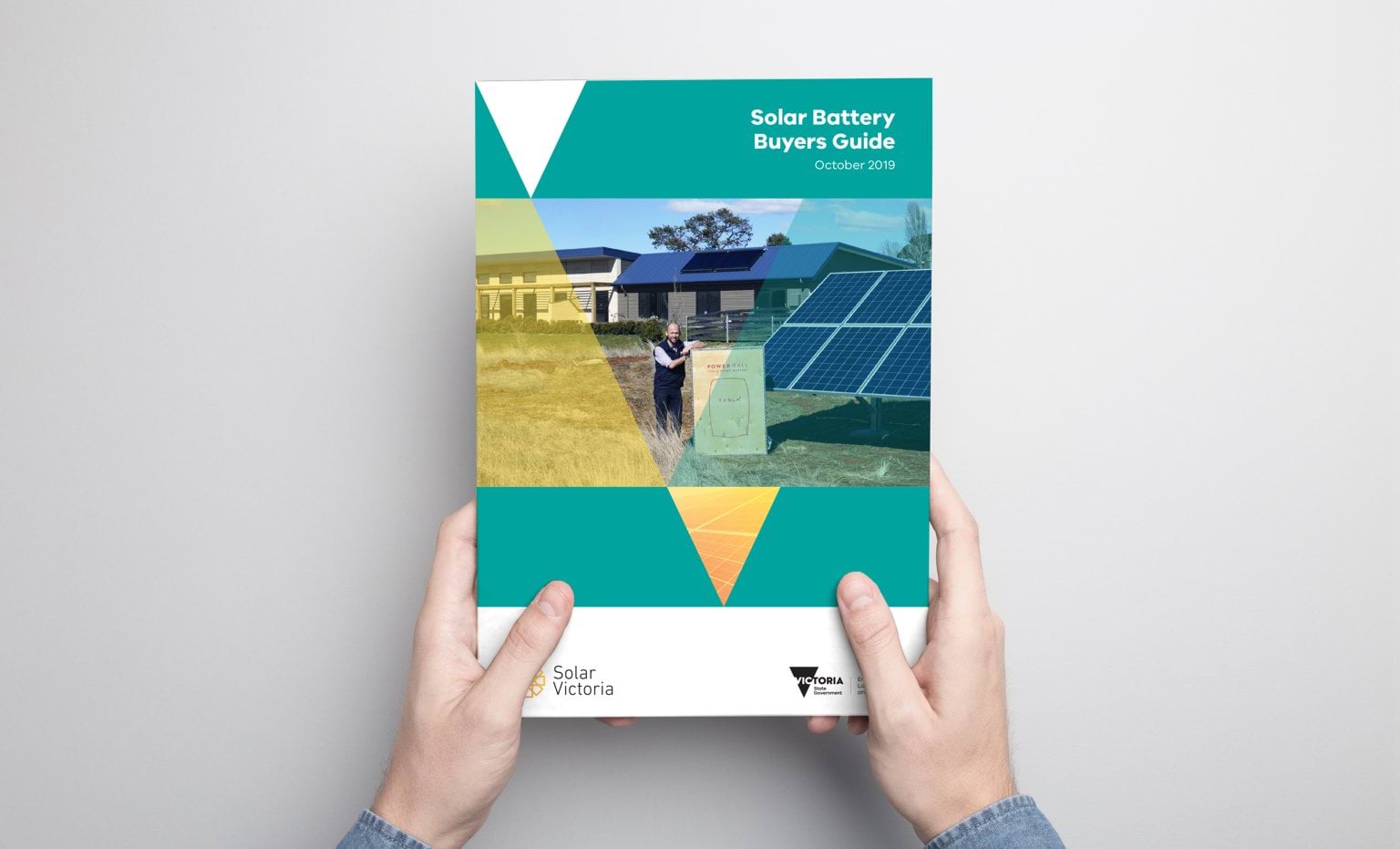Being clear on why they wanted a battery system helped Howard and Libby Elston to eventually work out the right storage system type and size to meet their needs.
“We knew that we wanted the system to work during a blackout, that was important to us. We wanted to be able to control how we exported or imported electricity from the grid, and we knew that we wanted to size the battery system so that it would cover our late afternoon and evening energy needs,” says Howard.
There was more to it than that, though, with the new solar and battery system one of the final big-ticket items to be installed on their new home at Ringwood East. The house is the first of three in a green housing development designed to promote community living and sustainability, through shared outdoor spaces and houses designed to use the least amount of energy possible. The development is their own initiative, and installing cutting edge battery technology to store solar electricity for nighttime use was part of their plan for low bills in retirement, and to demonstrate a more sustainable way of living.
Howard talks about how their installer, Gary, helped them plan a system with components that he knew would “do a good job,” and eventually decided on a 9.8 kilowatt-hour lithium-ion battery system to go with their 7.8 kilowatt solar PV power system.
Weighing up battery type
There used to be just one type of battery chemistry for home energy storage systems, lead-acid batteries. However, Howard weighed up the pros and cons of newer battery types such as lithium-ion and sodium nickel chloride to find the best fit for their system. They settled on a lithium-ion battery due to benefits such as being lightweight, which makes them easier to install, and their competitive cost compared to other technologies. Lithium-ion batteries also have greater depth-of-discharge (DoD), which specifies how much battery capacity is actually available without damaging the battery, and most of the energy can be discharged in a short amount of time, such as the two to three-hour evening peak.
Working out the battery size
The battery system size was worked out by looking at the couple’s electricity use, particularly at night. “We wanted a battery that fitted our estimated consumption, so we measured how much electricity we use up until midnight to help work out the battery size. We’re on off-peak electricity rates the rest of the night, so a system to get us through the early evening peak electricity rates was enough.”
They had another consideration when it came to battery size, though, which was to maximise their ability to use renewable energy in winter.
“Winter is the real trough in terms of having some energy left at the end of the day,” says Howard, as more cloudy days mean less solar electricity is generated, at a time when electricity demand is higher.
This led them to install a larger 9.8 kilowatt-hour battery (with useable capacity of 8.8 kilowatt-hours) to store more electricity to meet winter demand. Their battery and inverter combination has the ability to charge from the grid, so in winter they can avoid peak electricity rates in the early evening by either using their own stored-solar electricity, or planning ahead and charging the battery overnight on off-peak rates.

Researching battery retailers and estimating savings
This Melbourne household were early adopters of home energy storage and offer their own advice to anyone looking to add a battery to their solar PV system.
Back up capability
The decision to buy a quality inverter (the “brains” of the system) helped give the system the functionality they were after, with the inverter installed in a way to take advantage of the inverter’s grid backup function. Not all solar battery systems are designed to work in a power blackout, and this requirement needs to be planned by the installer with the right components.
Managing electricity imports and exports
Howard says the system is designed to help them manage their electricity imports and exports, which was important to them from a bill-saving point of view, but also because there is a five-kilowatt limit in their area on electricity exported to the grid.
Having a battery gives that excess solar energy a place to be stored, and the system design gives them control over how they use grid and solar electricity.
“We can program the system to do what we need it to do, and it gives us a lot of data about how our system is operating,” says Howard.
For instance, the battery is programmed to take any excess solar power from their panels, while in the middle of the day, their hot water heat pump cuts in for an hour or two to meet their hot water needs for the next 24 hours. “In the early afternoon, we’ll see if there’s enough electricity coming from the panels to charge Libby’s electric car. We don’t always fully charge the car as we’d prefer to have a full battery for household energy needs going into the late-afternoon. It sounds a bit complicated, but the inverter app actually makes it easy to do.”
“If it’s a sunny day, we’ll have a tank full of hot water, a full battery, a fully charged EV and then export the rest to the grid to share with other households,” he says.
Pay more for functionality
Return on investment wasn’t a big influence on their decision making this time around, but Howard expects the system to pay back within the battery warranty period of ten years. “Next time we purchase there will be new technology around and it might pay back a little faster,” he says.
“If you spend a little extra you jump up to the next level in terms of features and quality,” he says, “and that’s how we got a system that meets our needs.”
Updated




